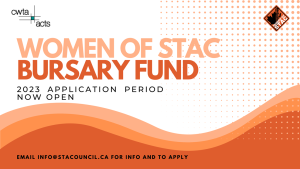I was recently introduced to a new software application for communications services providers that uses machine learning to identify clusters of customers in need of special attention, in order to reduce churn and increase revenue.
Let me step back for a minute to provide some background.
I met Frederic Beauvais in the late 90’s when he was a young lawyer at Stikeman’s in Montreal. We did some work together and became friends. I remember asking him if Stikeman’s handled residential real estate, and he said, “Of course we do. How many thousand homes are you building.” He found a law clerk to help us buy our house. Whenever he called the house and reached my wife, he would lay on a thick French accent, although he otherwise speaks English to me and business associates with more of a mid-western diction. I always thought that wasn’t playing fair.
A few years later, Frederic moved from law into the world of investments, with a special focus on the telecom sector, and ended up being based in Paris.
For the past year and a half, he has focused his energy on Lifetime Analytics, developing an an end-to-end solution for marketing, product, sales and customer experience teams with telecom operators to address churn, upselling and cross-selling improvement opportunities. Its goal is to support the design of focused marketing, commercial and care action plans for selected customer groups that are at risk for churn, or that present an up-selling or cross-selling potential.
Churn is a key metric for telecommunications services providers – what proportion of the customer base disconnect each month. It is a way to measure customer satisfaction and happy customers translate into significant savings in costs of acquisition. As described in a recent article (“Beyond churn scoring“), Lifetime Analytics have “elaborated an innovative approach to understand churn factors and generate a continuously improving churn learning model in the telecommunications industry.”
The commonly used approach to analyze churn in the telecom industry relies on estimating the probability for each customer to churn, which is materialized in a scoring methodology that is then used as a guide for the elaboration of action plans. This scoring approach is typically based on automated learning from past churners, using a “classification” approach to distinguish churners and non-churners.
Lifetime Analytics discovered that a “cluster” approach was a better way to identify customers requiring commercial or care actions, enabling the design of targeted action plans and micro-campaigns, replacing more traditional scoring approaches that are often less actionable.
Lifetime Analytics is structured around 3 main features:
- Lifetime Analytics automatically identifies clusters of customers that are at risk of churning or that present an up/cross-selling potential based on homogeneous factors. These clusters and resulting churn and up/cross-selling factors are consistently measured over time, and obviously evolve as customer situations and market conditions constantly change.
- Lifetime Analytics enables teams to design and run targeted commercial/care actions on each cluster, and even subset of customers within each cluster for more granularity. The application also recommends actions with an integrated business case simulator allowing to fine-tune actions on any customer micro-segment.
- Lifetime Analytics tracks and monitors the impact of these actions on the churn and ARPU dynamics both at the cluster and company levels. The application’s customer cohort monitoring provides a granular monitoring of implemented action impacts, allowing to identify continuous improvements and optimization opportunities.
Frederic tells me, “We believe one important point to convince telecom service providers to try our Lifetime Analytics application is that it can be easily implemented by telecom operators with a simple technical set-up, and without the need to launch an IT or integration project.” The application is based on a flexible open-data model, nourished on a regular basis with a set of pre-defined BSS and OSS data items, which can be enriched based on the needs and resources of each client.
I suspect there should be interest in this application from service providers of all sizes, and from telecom consultancy practices.
Let me know if I can help make an introduction.

